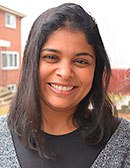
THE BRIDGE TO COLLEGE
UF Admissions Changes Could Spell Trouble for Florida Students

What might appear like a mere administrative change to the University of Florida’s admissions process may significantly affect enrollment at the state’s flagship school. UF has announced that it will only accept the new application from the Coalition for Access and Affordability. Why change from a Florida-specific application to a universal form?
This is a strategy based upon rankings and reputation. In 2016, U.S. News & World Report ranked UF in a tie for #14 among public universities. The school would surely like to move into the top 10, which would put it in the same category as more-heralded schools like UC Berkeley, UCLA, Virginia and Michigan.
These lists are generated from algorithms that consider multiple factors – for example, acceptance rates, test scores, class sizes and graduation rates – to rank colleges in several categories. Although experts may argue about the accuracy and value of the rankings, there is no dispute that moving up the list can help a school monetarily. Alumni donations and research funding increase rapidly when a school improves its ranking.
Schools can, and do, game the system. When he took over in 1996, former Northeastern University president Richard Freeland used the algorithm to guide his school up the ranking more than 60 positions. Freeland utilized a variety of strategies, but two of the most powerful are broadening the profile of the student body (attracting students from around the country and the world) and tightening admissions rates.
UF’s recent move to the Coalition application seems targeted at both factors. By moving to the new platform, UF will naturally attract more applicants, including significantly more from outside of Florida. Although last year’s applicants had to complete a separate application just for UF, now an applicant to any of the ninety Coalition colleges can easily apply to UF with just a few additional steps.
The move to the Coalition will result in more total applicants, plus broader diversity among the applicant pool. Since the total student body will not increase significantly, simple math proves that Florida residents can expect UF to offer fewer spots to in-state students.
In addition, if the history of colleges like Northeastern and Stanford are any indication, we are likely to see UF accepting fewer students overall. The current trend in college admissions is to accept fewer freshman applicants so that the selectivity number is as low as possible. Some schools delay applicants a semester so that they do not contribute to “the number,” while others pull from waiting lists or seek transfer students. Perhaps, UF will rely upon its recently-created online PaCE program to preserve enrollment while tightening admissions. Whatever the strategy, UF’s tougher admissions requirements means that students who might have been admitted in previous years will be left out in the cold.
Having an elite educational institution may be a boon to a state, but what should Florida families do? Since UF, as a public university, must primarily rely upon objective criteria when making admissions decisions, students and families should expect the university to require more impressive test scores, grades, and resumes moving forward. In addition, students who might otherwise have felt comfortable with their admissions profile must now use their absolute best efforts in writing admissions essays. A great essay could be the most important differentiator for those applicants who are “on the bubble.”
Florida families should be prudent and consider a range of universities – both within and outside Florida – to enhance their college options. That includes considering private institutions. Be careful about the price tags you see online. Public universities usually do not mention room, board, or other costs because those charges are either individually incurred or paid to off-campus providers like apartment complexes. On the other hand, prices publicized by private universities often include all costs but are later discounted by financial aid, merit aid, scholarships, and grants provided by the schools at the time of the admissions offer. For 75 percent of the population, the “expensive” private colleges can be less costly overall than Florida public universities.
If your heart is set on being a Gator, continue with your preparation, increase your focus, but broaden your options.
Robert A.G. Levine, president of Selective College Consulting Inc., can be reached at (813) 391-3760, email [email protected] or visit www.SelectiveCollegeConsulting.com
FAMILY MATTERS
Will the Real Desi Please Stand Up?

As a child of the diaspora growing up outside India, August 15 meant paying homage to the motherland by performing at the Indian High Commission. Community elders speechified; uncles gamely dressed up as Mahatma Gandhi and Jawaharlal Nehru; and there was the inevitable confusion at the food tables. These events were preceded by weeks of rehearsing dances to vaguely patriotic film songs — which meant many awesome afternoons spent messing around with friends while Choreographer Auntie put us through our paces.
Now that I’m the adult searching for some way to impart the significance of the connection between my heritage and my citizenship to my children, I wonder: What does it mean to be Indian American today? We tend to label certain traits or traditions as “Indian:” respect for elders, big weddings, lack of personal boundaries, food obsession — but those clichés can be applied to any number of ethnic groups. Same with the “American” values of individualism, independence, entrepreneurial spirit: No one has a monopoly on any of the above. So in this globalized age, who defines the real desi? The cousin in Bangalore who owns a hip rooftop grill joint that serves jalapeno margaritas? Or the Floridian woman who told me proudly that her preteen daughter doesn’t even “know who Justin Beiber is” and only listens to devotional songs in the car?
When I talk to desi adults who grew up in America in the 1980s or before, there seemed to have been a clear delineation between the Indian kids they were at home and the American ones they were in public. School friends didn’t understand their home culture, and their parents did their best to prevent America from catching. Things have changed. We are now — if not quite mainstream or past the cliché stage of media representation — a familiar sight. Our president delivers Diwali greetings, and we have more Indian Americans in political leadership than ever before. On screen, we see everyone from Made-in-India Priyanka Chopra to our very own Mindy Kaling. Just in my Tampa zip code alone, there are two Indian restaurants and a grocery store, and no fewer than six classical dance teachers.
Kids growing up here today appear to have more seamlessly integrated their Indian and American identities, and maybe it’s because there’s less explaining to do, both inside and outside the home. When I was a kid being driven to Bharathanatyam performances, I dreaded the mortification of being spotted in full regalia by a non-Indian classmate. My older daughter, on the other hand, chose Bharathanatyam as her topic for a recent Genius Hour project at school, and showed up unfazed in complete headgear to show off her PowerPoint to classmates. They’ve created a sort of IA identity for themselves, one where regional distinctions blur in favor of common themes. Regardless of whether their parents are from the North, South, East or West of India, these kids close down the garba floor at Navratri time, perform beautifully at arangetrams and compete in bhangra teams. And they’re comfortable carrying that aspect of their identity with them even as they throw themselves wholeheartedly into the American communities in which they live.
Sure, in the process, nuance is lost. We come from a country where a distance of a few miles can create a difference in the way a ritual is conducted, but once we are abroad, we coalesce into groups and settle for the closest thing we can get to the original. Languages are blurred, and details fall by the wayside, unable to withstand the pressures of explanation and inconvenience. Although it’s sad to think that there are certain things that our kids will just never really know, we have to recognize that culture cannot be static. All creatures adapt to — and sometimes influence — their habitat. It would not only be unnatural for our children to be completely impervious to local influences, it would be a loss and source of confusion for them. While the mish-mash identity our children create for themselves may be quite different from the one we hold, their version of being desi is as authentic as anyone else’s.
So why bother taking them to August 15 celebrations? Why not watch the fireworks on the Fourth of July and call it a day? Because just as I derived comfort from knowing I was part of this vast diaspora, participating in these functions can give my children a sense of belonging also. Underneath the trappings of costume and performance is a vast, ancient and complex history, a shared heritage that can be a source of strength and pride. Knowing where they came from can be the ballast that helps stabilize them as they soar upward and contribute and make a place for themselves here, which is, after all, their rightful home.
Anu Varma Panchal is a mother of two and owner of www.YourEditingSolutions.com